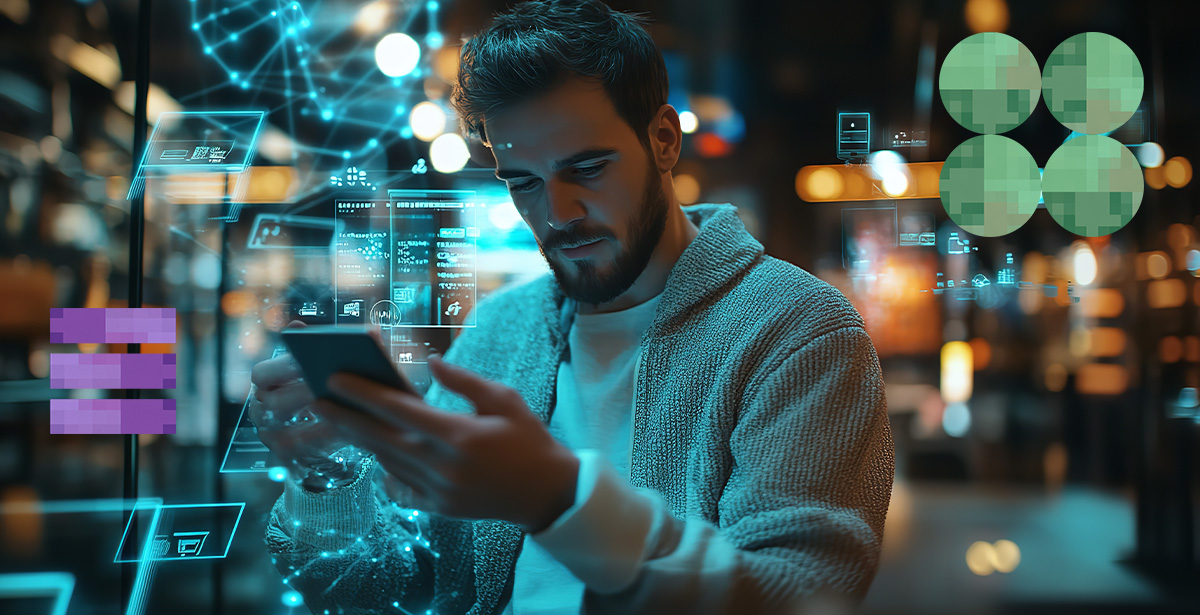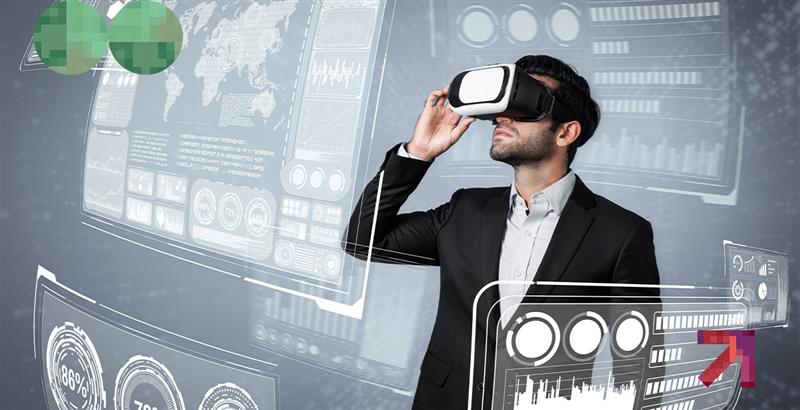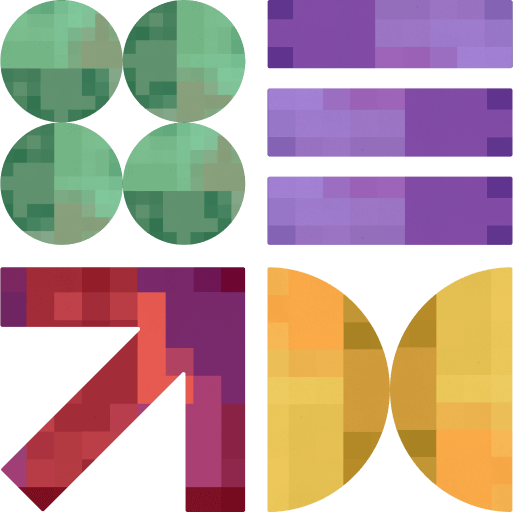6 Technologies Transforming Internet of Things Application Development

The Internet of Things is no longer a futuristic vision; it’s the infrastructure powering competitive advantage today.
Experts expect this, which is why the global IoT market is projected to nearly double from $960 billion in 2023 to $1.8 trillion by 2028.
But there’s a catch. This growth will be fueled by AI, machine learning, edge computing, and other technologies. (RCR Wireless, 2025)
IoT alone isn’t enough to secure your edge. Without integrating next-generation technologies, your systems risk becoming outdated, reactive, and slow to deliver value.
So, unless you wish to lag behind the competition, you too need to go beyond Internet of Things application development to include additions that create an autonomous, hyper-intelligent ecosystem.
And here are six recommendations to get you started.
💡 Fully unlocking IoT’s potential starts with understanding it. Learn what IoT platform development truly is and the tangible benefits it can bring to your business before falling behind in an increasingly connected world.
1) Combine AI and IoT Application Development
Artificial Intelligence (AI) and IoT together form the backbone of next-generation intelligent systems. While IoT collects massive amounts of data through interconnected devices, AI transforms this raw data into actionable intelligence.
This powerful combination drives real-time decision-making, automation, and predictive insights. It also redefines efficiency, scalability, and customer experience across various digital ecosystems.
By merging AI with IoT application development, businesses can achieve predictive maintenance, automated quality control, and adaptive operations. This significantly reduces downtime and operational costs.
AI algorithms further enhance IoT’s sensory network by recognizing patterns, detecting anomalies, and supporting self-optimizing systems. This is more than data monitoring; it’s a closed-loop system where machines think, learn, and act.
For industries such as manufacturing, healthcare, and logistics, this convergence offers faster response times, personalized services, and data-driven innovation. It further enables the leap from reactive processes to fully autonomous operations with higher resilience.
2) Include ML in Internet of Things Application Development
Machine Learning (ML) enables systems to learn from data, adapt autonomously, and make accurate predictions without explicit programming.
In IoT ecosystem, where billions of devices generate continuous real-time data, ML provides the intelligence to analyze, interpret, and act on this information. This transforms Internet of Things application development from passive data collection into proactive decision-making systems.
Furthermore, ML in IoT application development creates adaptive, self-optimizing solutions that scale with business needs. ML models can predict equipment failures before they occur, optimize supply chain routes in real-time, and detect security breaches instantly.
This combination is crucial because it transitions businesses from reactive operations to predictive and prescriptive intelligence. This, in turn, reduces costs, prevents downtime, and enables strategic responsiveness.
For industries competing on speed, precision, and efficiency, ML-powered IoT is not just an upgrade; it’s a competitive necessity and a driver of continuous innovation.
3) Bring Together Edge Computing and IoT Apps
Edge computing processes data at or near its source, eliminating the delays of sending everything to a centralized cloud.
In IoT context, this means connected devices can analyze and act on information instantly. This enables faster decisions, reduced network strain, and greater operational reliability, even in bandwidth-constrained or remote environments.
When edge computing is integrated into Internet of Things application development, it transforms how businesses handle time-sensitive operations. Data is processed locally, enabling millisecond decisions for robotics, autonomous vehicles, and industrial safety systems.
Additionally, it optimizes bandwidth by transmitting only processed results, reducing network costs by up to 90%. It also ensures operational continuity, keeping systems functional during connectivity outages.
Beyond speed and resilience, edge-powered IoT strengthens security by keeping sensitive data on-site and unlocks scalable intelligence. Combined with AI or ML, it can deliver hyper-personalized, context-aware experiences in real time.
💡 Bespoke IoT software is essential to align AI, ML, edge computing, and other technologies with your unique operations. Especially as it ensures maximum benefits and scalable performance. Off-the-shelf solutions often fall short, and that’s why custom IoT software is indispensable for businesses that truly wish to thrive.
4) Develop IoT Applications with Digital Twins
Digital twins are high-fidelity virtual replicas of physical assets, systems, or processes that are continuously updated with live data from IoT sensors.
They create a dynamic, real-time model that mirrors the performance, condition, and environment of the actual object. This allows engineers and decision-makers to monitor, simulate, and optimize without disrupting real-world operations.
Developing IoT applications with digital twins gives enterprises unprecedented operational intelligence. For instance, they enable predictive maintenance by detecting degradation patterns early.
Moreover, they optimize asset performance by simulating parameter changes and validate design improvements before physical deployment.
Further, manufacturers can eliminate costly trial-and-error on production floors. Meanwhile, energy companies can fine-tune grid efficiency under varying load scenarios.
For tech-driven industries, this fusion means faster innovation cycles, reduced downtime, lower operational costs, and a data-rich foundation for continuous improvement.
It also turns IoT from a monitoring tool into a strategic performance engine capable of simulating multiple “what-if” scenarios before implementation.
5) Add Blockchain to Your IoT Applications
Blockchain is a decentralized, tamper-proof ledger that records transactions securely and transparently across a distributed network.
In the IoT ecosystem, countless devices exchange data autonomously, and blockchain ensures that this data is immutable, verifiable, and resistant to unauthorized manipulation. This, in turn, builds trust in environments with minimal human oversight.
Adding blockchain to Internet of Things application development elevates data integrity, security, and traceability. Every data transaction from IoT devices is cryptographically secured and stored in a distributed ledger, preventing single points of failure and reducing vulnerability to cyberattacks.
Supply chains gain real-time product provenance, autonomous vehicles share trustworthy navigation data, and industrial IoT systems validate machine-to-machine communication without intermediaries.
For enterprises, this fusion enables regulatory compliance, prevents costly disputes, and creates new opportunities for secure, automated, and trustless digital ecosystems. All while enhancing auditability for mission-critical processes.
💡 Blockchain improves data integrity and traceability, but that’s not enough. Holistic IoT security implementation across devices, networks, and operations is essential to prevent breaches, maintain reliable connectivity, and ensure continuous, safe operation of your IoT ecosystem.
6) Consider Metaverse with IoT Apps
The metaverse is an immersive, persistent digital environment where physical and virtual worlds converge. It allows real-time interaction through 3D spaces, digital avatars, and advanced simulations.
When paired with IoT, the metaverse becomes a live, data-driven ecosystem, bridging physical assets and digital experiences with unprecedented accuracy and interactivity.
Integrating the metaverse in Internet of Things application development turns static virtual spaces into responsive, real-world-linked environments.
IoT sensors feed live data into the metaverse, enabling digital twins that reflect real-time conditions, immersive remote equipment monitoring, and interactive control of physical systems from virtual dashboards.
And this merger can benefit several industries. Smart factories can be managed in a fully simulated environment. Meanwhile. retail experiences can adapt instantly to customer behavior, whereas urban planning can leverage city-scale, real-time models.
For enterprises, this fusion accelerates decision-making, enhances collaboration, reduces operational risks, and opens new revenue streams in virtual commerce, training, and simulation. Moreover, it enables global teams to interact effectively without physical presence.
💡 Why worry about your IoT application? Because new trends and emerging shifts could disrupt operations, create security challenges, and put your competitiveness at risk. Stay aware and get ready for IoT evolution.
Your Internet of Things Implementation Partner is a Click Away
Our team of specialists is your trusted IoT development partner in Tampa, transforming IoT concepts into secure, scalable, high-performance solutions.
Leveraging AI, edge computing, and advanced technologies, we manage every layer, from device architecture to data protection, ensuring your IoT ecosystem performs optimally and stays adaptable.
Have an idea that could transform your operations? Fill out the form below, and we’ll start mapping your next big IoT win.





